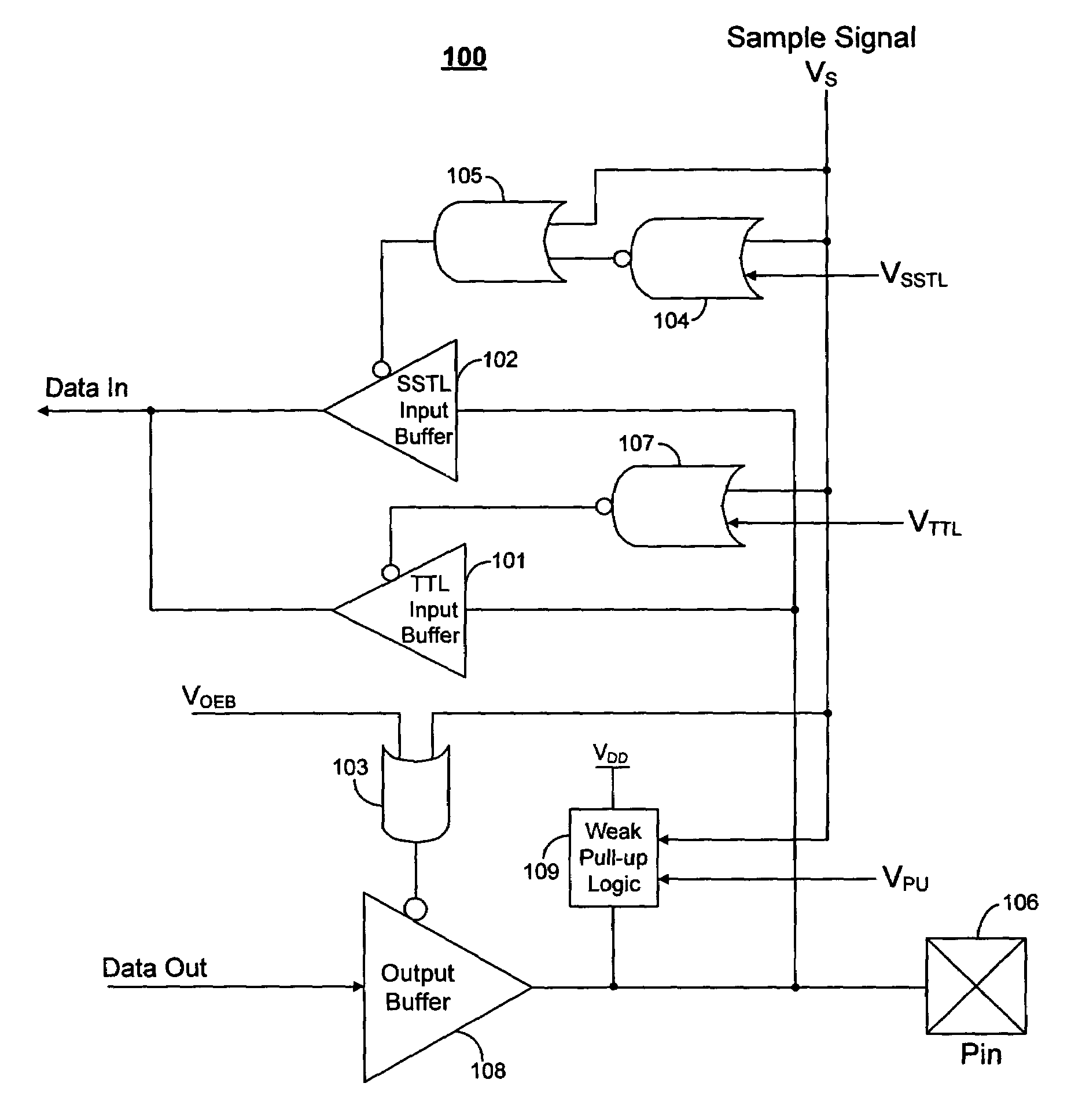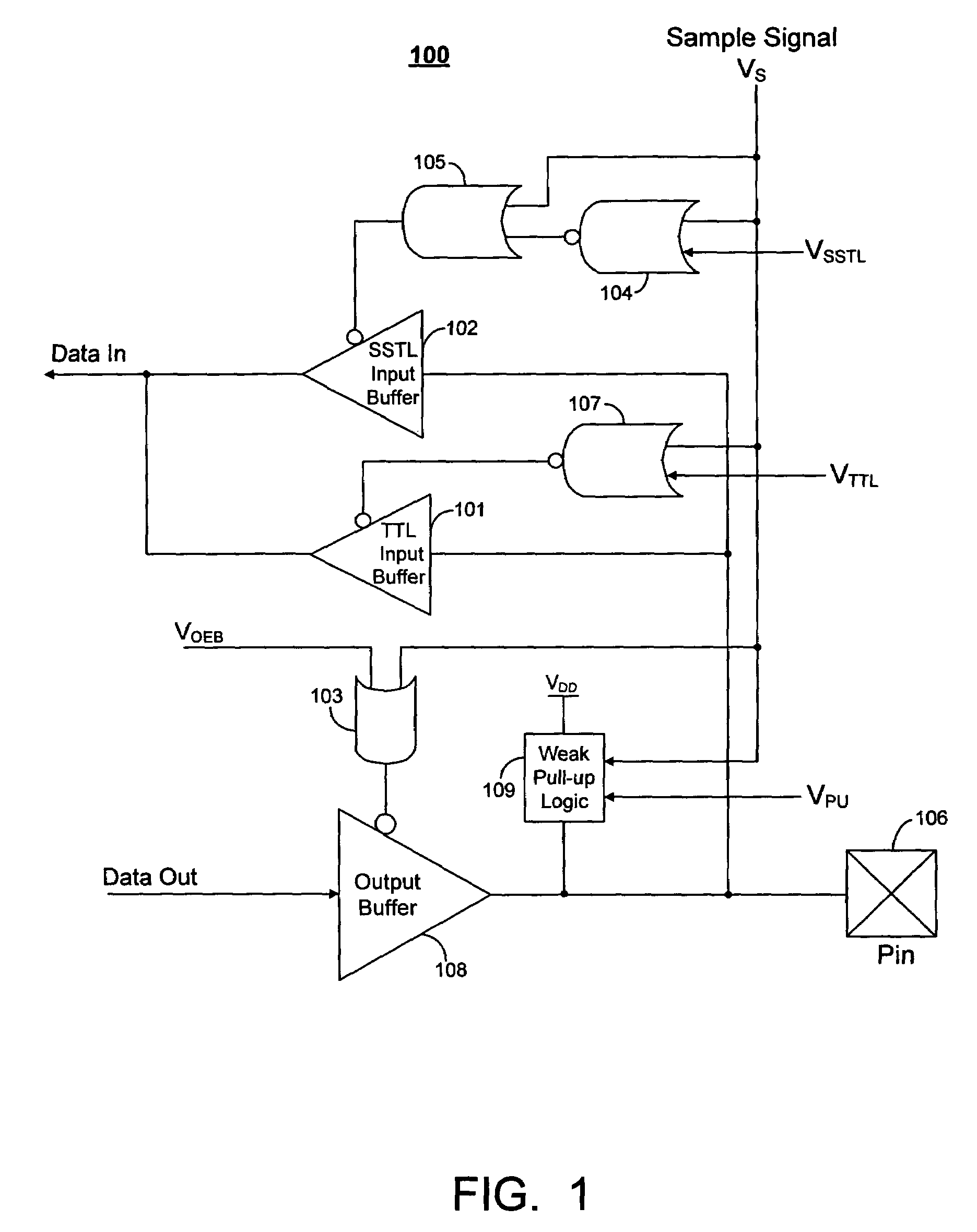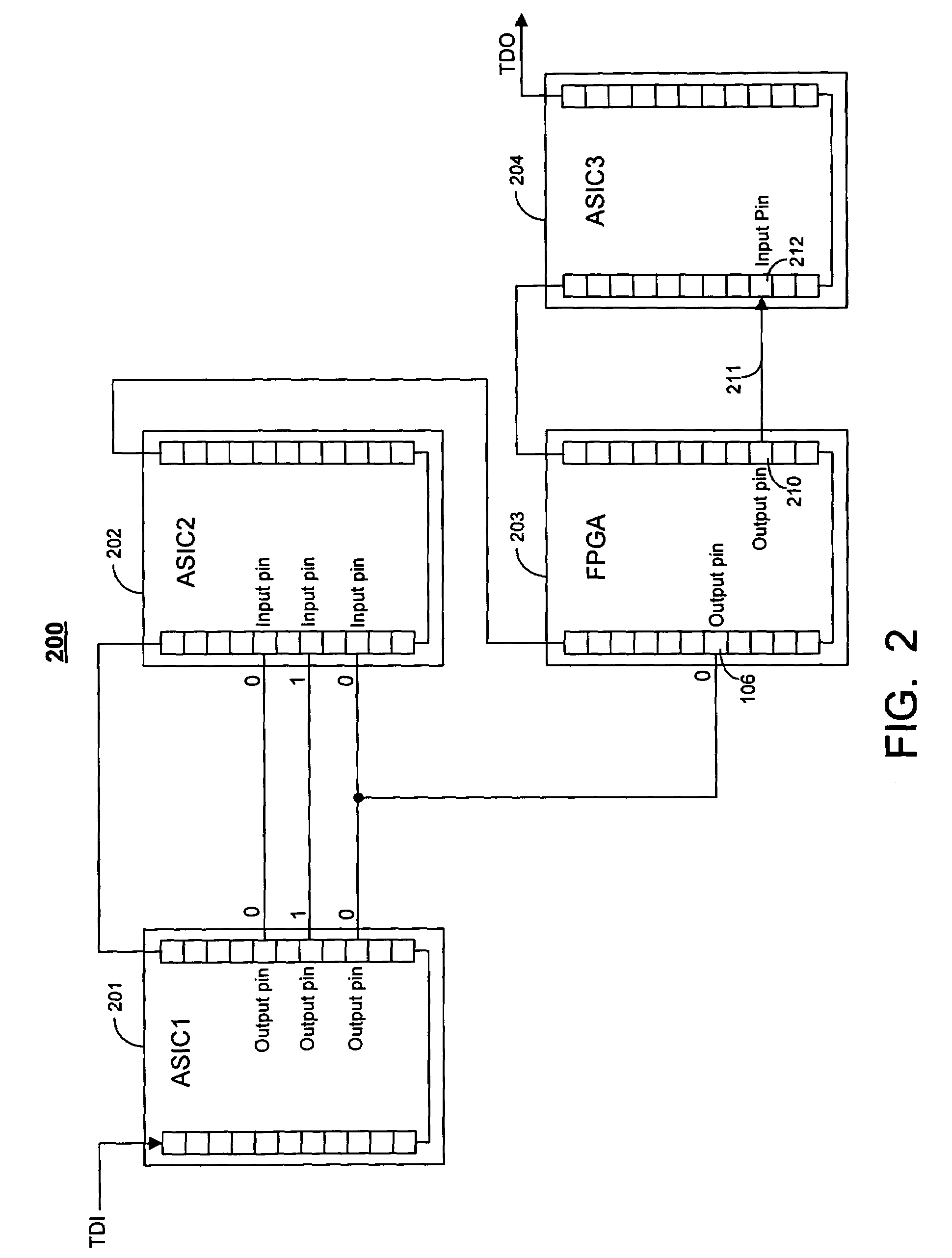Techniques for capturing signals at output pins in a programmable logic integrated circuit
a technology of programmable logic and output pins, applied in the field of programmable logic integrated circuits, can solve the problems of inability of the receiving chip to capture interconnect test signals applied to the output pins, failure of jtag sample instruction, and inability to work properly, etc., to achieve the effect of less time and easy implementation
- Summary
- Abstract
- Description
- Claims
- Application Information
AI Technical Summary
Benefits of technology
Problems solved by technology
Method used
Image
Examples
Embodiment Construction
[0017]FIG. 1 illustrates a portion 100 of an input / output (IO) block on a programmable logic integrated circuit chip, such as a field programmable gate array (FPGA), a programmable logic device, or a mask FPGA / PLD.
[0018]IO portion 100 of the chip is designed to receive a signal at pin 106 that is used to test external resources such as board level interconnects according to an embodiment of the present invention. The present invention can be used to test a variety of interconnections. For example, IO portion 100 can receive a signal that indicates the operability of a board level interconnect line that routes signals between two IC chips.
[0019]Board level interconnects are tested during a JTAG sampling phase of a boundary scan according to the IEEE JTAG 1149.1 standard. During the JTAG sampling phase, a signal is driven to a receiving chip to test the operability of the board level interconnect. A JTAG sample signal VS is high during the JTAG sampling phase. Pin 106 is programmed to...
PUM
 Login to View More
Login to View More Abstract
Description
Claims
Application Information
 Login to View More
Login to View More - R&D
- Intellectual Property
- Life Sciences
- Materials
- Tech Scout
- Unparalleled Data Quality
- Higher Quality Content
- 60% Fewer Hallucinations
Browse by: Latest US Patents, China's latest patents, Technical Efficacy Thesaurus, Application Domain, Technology Topic, Popular Technical Reports.
© 2025 PatSnap. All rights reserved.Legal|Privacy policy|Modern Slavery Act Transparency Statement|Sitemap|About US| Contact US: help@patsnap.com



